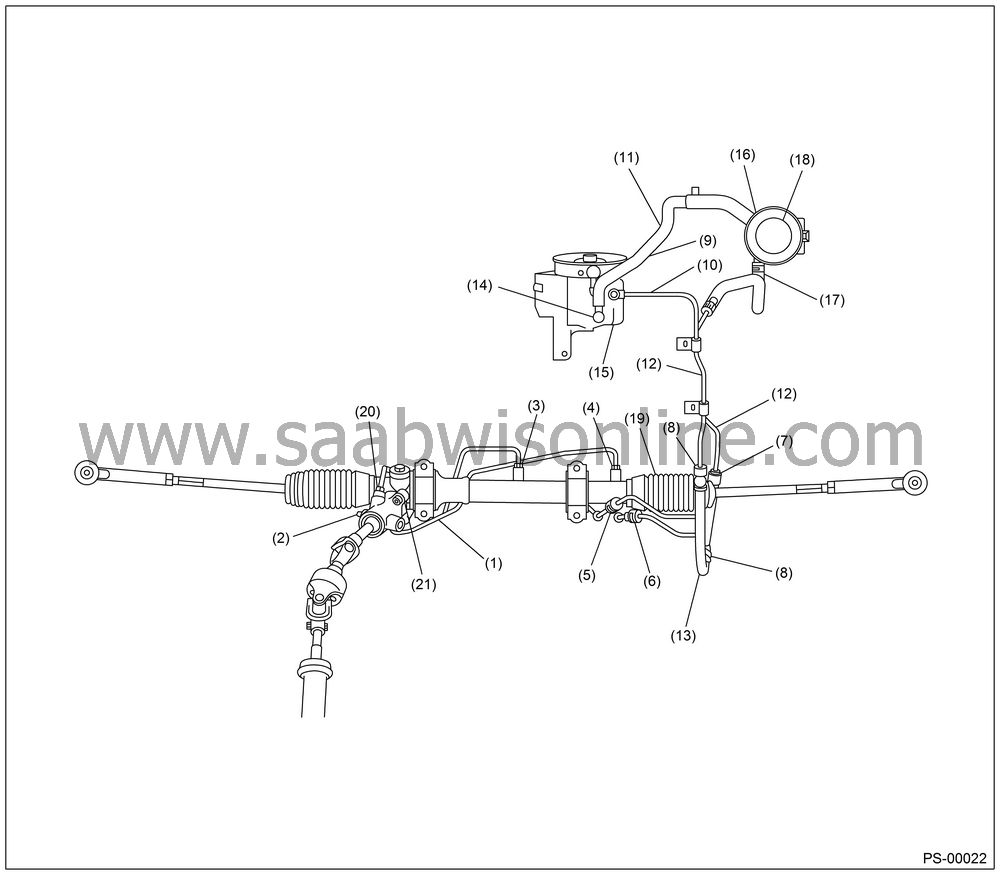INSPECTION
| INSPECTION |
Check all disassembled parts for wear, damage or other abnormalities. Repair or replace faulty parts as required.
| Part name | Inspection | Remedy | ||||||||||||||||||
|
Pipe
|
|
Replace
with a new one.
|
||||||||||||||||||
|
Clamp
|
|
Replace
with a new one.
|
||||||||||||||||||
|
Hose
|
|
Replace
with a new one.
|
||||||||||||||||||
| Important | ||
|
Although the surface layer materials of rubber hoses have excellent weathering resistance, heat resistance and resistance for low temperature brittleness, they are likely to be damaged chemically by brake fluid, battery electrolyte, engine oil and automatic transmission fluid and their service lives are to be very shortened. It is very important to keep the hoses free from before mentioned fluids and to wipe out immediately when the hoses are adhered with the fluids. |
||
|
Since the resistances for heat or low temperature brittleness are gradually declining according to time accumulation of hot or cold conditions for the hoses and their service lives are shortening accordingly, it is necessary to perform the careful inspection frequently when the vehicle is used in hot weather areas, cold weather area and a driving condition in which many steering operations are required in short time. |
||
|
Particularly, continuous work of relief valve over 5 seconds causes to reduce service lives of the hoses, the oil pump, the fluid, etc. due to over heat. |
||
| Trouble | Possible cause | Corrective action |
|
Pressure hose burst
|
Excessive
holding time of relief status
|
Instruct
the customers.
|
|
Malfunction
of relief valve
|
Replace
the oil pump.
|
|
|
Poor
cold characteristic of fluid
|
Replace
the fluid.
|
|
|
Forced out return hose
|
Poor
connection
|
Correct.
|
|
Poor
holding of clip
|
Retighten.
|
|
|
Poor
cold characteristic of fluid
|
Replace
the fluid.
|
|
|
Fluid bleeding out of hose slightly
|
Wrong
layout, tensioned
|
Replace
the hose.
|
|
Excessive
play of engine due to deterioration of engine mounting rubber
|
Replace
the defective parts.
|
|
|
Improper
stop position of pitching stopper
|
Replace
the defective parts.
|
|
|
Crack on hose
|
Excessive
holding time of relief status
|
Replace.
Instruct customer. |
|
Excessive
tightening torque for return hose clip
|
Replace.
|
|
|
Power
steering fluid, brake fluid, engine oil, electrolyte adhere on the
hose surface
|
Replace.
Pay attention on service work. |
|
|
Too
many times use in extremely cold weather
|
Replace.
Instruct the customers. |

| Note | ||
|
It is likely that although one judges fluid leakage, there is actually no leakage. This is because the fluid spilt during the last maintenance was not completely wiped off. Be sure to wipe off spilt fluid thoroughly after maintenance. |
| Fluid leaking area | Possible cause | Corrective action |
|
Leakage from connecting portions of pipes and hoses, numbered
with (1) through (10) in figure
|
Insufficient
tightening of flare nut, catching dirt or the like, damage to flare
or flare nut or eye bolt
|
Loosen
and retighten, if ineffective, replace.
|
|
Poor
insertion of hose, poor clamping
|
Retighten
or replace the clamp.
|
|
|
Damaged
O-ring or gasket
|
Replace
the O-ring or gasket pipe or hose with new one, if ineffective,
replace gearbox also.
|
|
|
Leakage from hose (11), (12) and (13) in figure
|
Crack
or damage in hose
|
Replace
with a new one.
|
|
Crack
or damage in hose hardware
|
Replace
with a new one.
|
|
|
Leakage from surrounding of cast iron portion of oil pump
(14) and (15) in figure
|
Damaged
O-ring
|
Replace
the oil pump.
|
|
Damaged
gasket
|
Replace
the oil pump.
|
|
|
Leakage
from oil tank (16) and (17) in figure
|
Crack
in oil tank
|
Replace
the oil tank.
|
|
Leakage from filler neck (18)
|
Damaged
cap packing
|
Replace
the cap.
|
|
Crack
in root of filler neck
|
Replace
the oil tank.
|
|
|
High
fluid level
|
Adjust
the fluid level.
|
|
|
Leakage
from surrounding of power cylinder of gearbox (19) in figure
|
Damaged
oil seal
|
Replace
the oil seal.
|
|
Leakage from control valve of gearbox (20) and (21) in figure
|
Damaged
packing or oil seal
|
Replace
the problem parts.
|
|
Damage
in control valve
|
Replace
the control valve.
|


